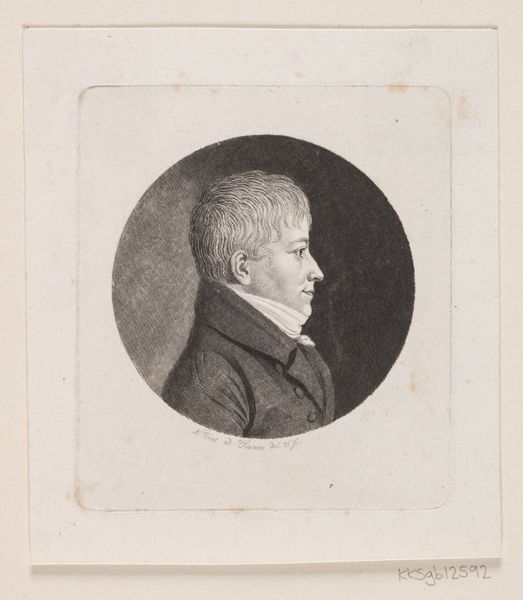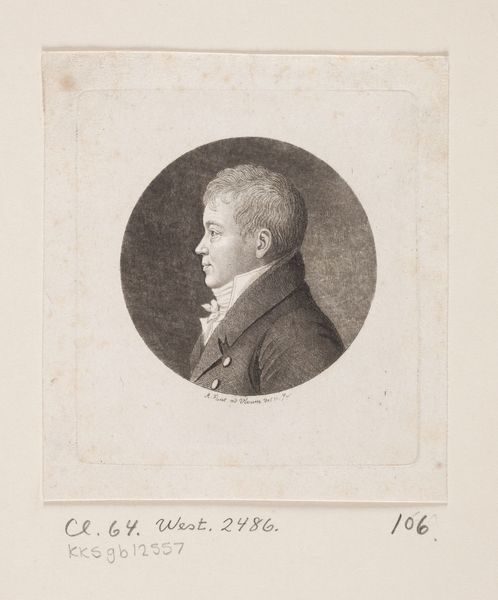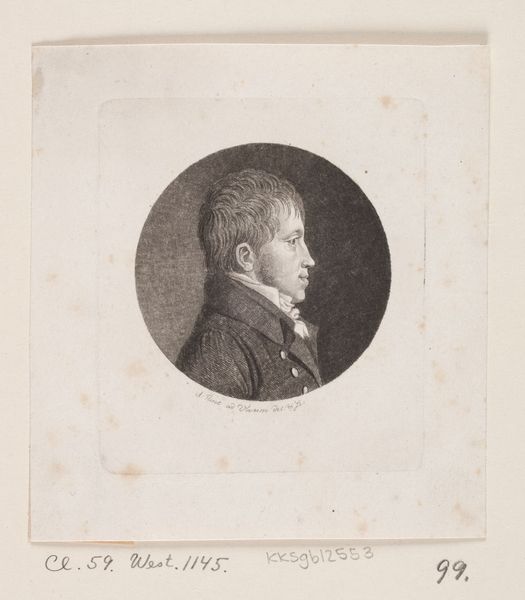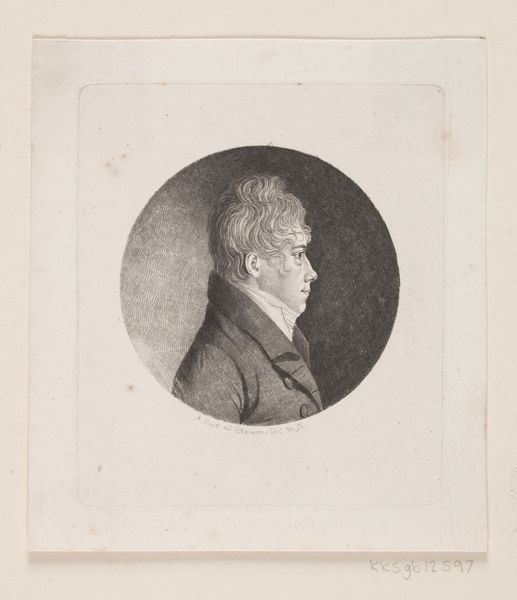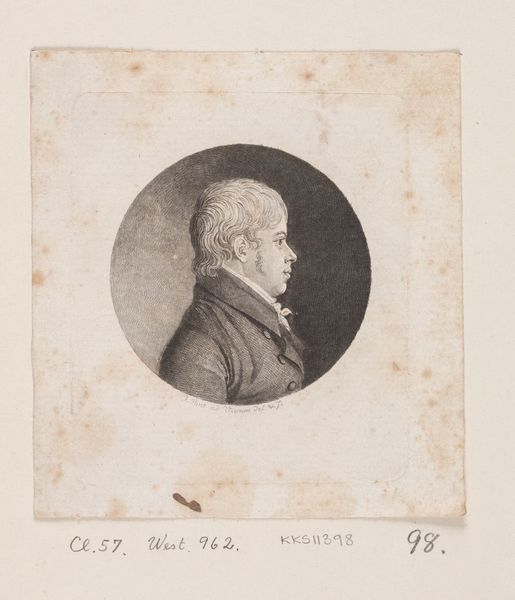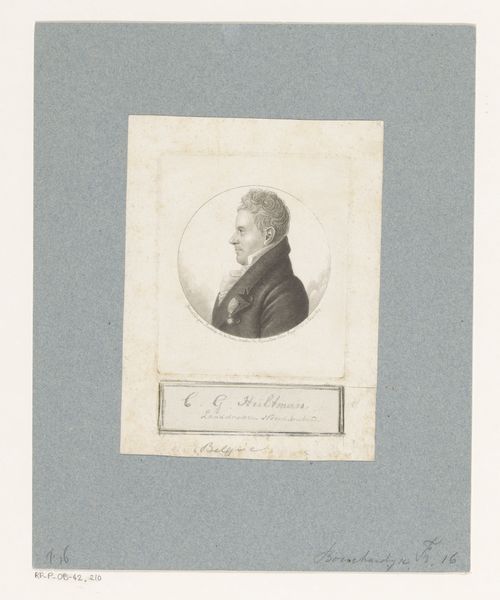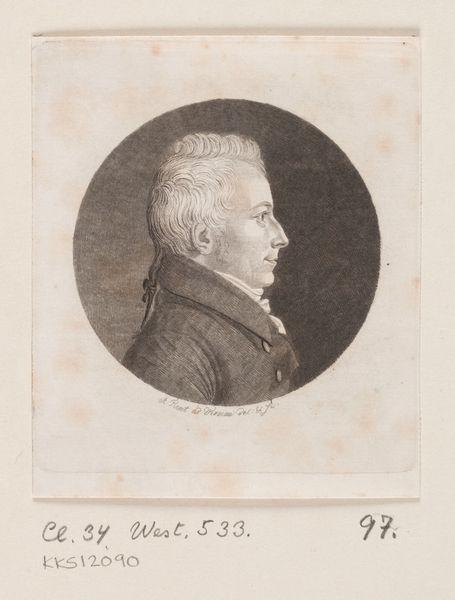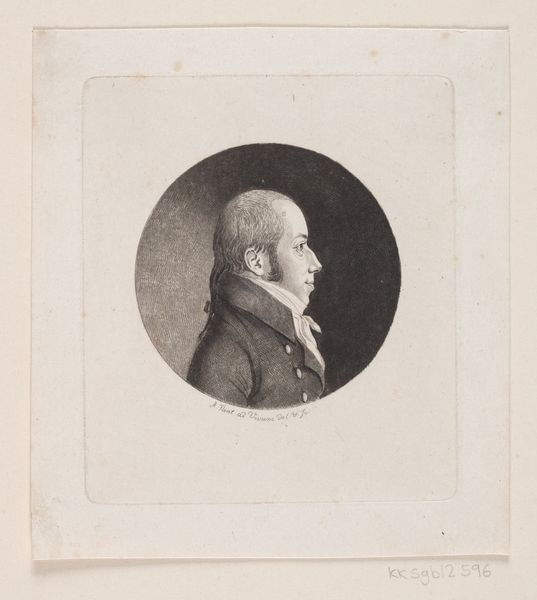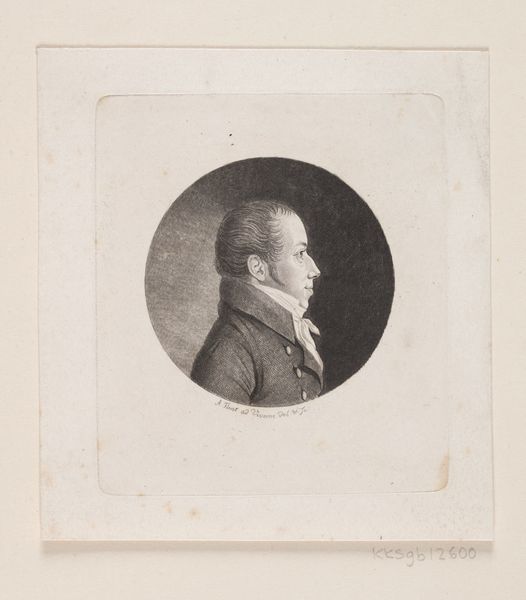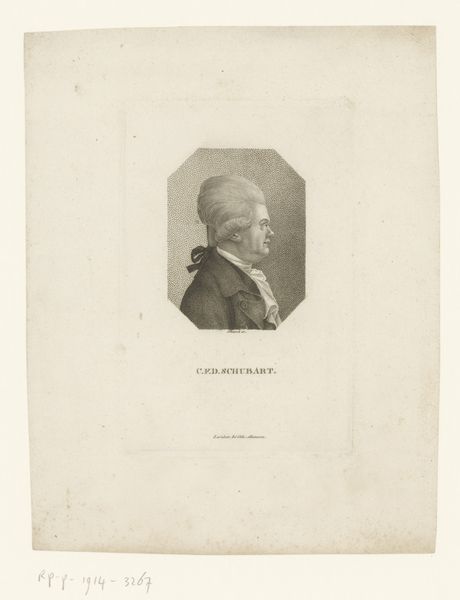
drawing, print, pencil, engraving
#
drawing
#
neoclacissism
# print
#
pencil drawing
#
pencil
#
engraving
Dimensions: 60 mm (None) (billedmaal), 85 mm (height) x 75 mm (width) (plademaal)
Curator: This delicate drawing is a portrait of G. H. C. Koes, made sometime between 1767 and 1824. The artist skillfully combined pencil work and engraving. It’s currently held at the Statens Museum for Kunst. Editor: Immediately striking is its quiet elegance. The subject seems lost in thought, detached, almost melancholic. The stark monochrome palette contributes to this impression. Curator: Indeed. Portraits like these often present a constructed image of social standing, but the turn of the head away from the viewer certainly suggests a psychological depth. There’s a vulnerability present, a marked divergence from previous representations of nobility in Western Art. It shows its subject is lost in introspective contemplation. Editor: It makes me wonder about the politics of representation at the time. Consider that this image comes out of the Neoclassical movement. Was it radical for portraits of this period to suggest private emotional states in individuals, to hint at an inner life separate from social performance? Curator: Absolutely, it signaled the shift in visual culture to prioritize emotion, even sensitivity, as attributes of the modern individual, especially for one such as this boy with so much promise. Remember also the symbolism inherent in presenting someone at an angle – it suggests a complexity that a full frontal depiction might lack. It subtly resists being pinned down, interpreted too easily. Editor: That makes me think of the burgeoning field of psychology at that time – this is well before Freud but the Enlightenment ideals promoted the use of rationality and reason which ultimately encouraged individuals to explore the complexities of human experience and challenge traditional modes of thinking about selfhood and identity. Was this maybe trying to represent emerging ideals of humanism at this historical juncture? Curator: Very well-observed, as it also brings me back to the artist's technical skill, blending the softness of pencil with the sharp precision of engraving. This, to me, enhances that contrast between outer appearance and inner life, between surface and depth. Editor: And ultimately pushes this image far beyond simply being a visual document into a probing meditation on emerging identities in modern times. A subtle revolt that whispers loudly, even today. Curator: I concur; its restraint speaks volumes, proving its power beyond the immediate, as cultural symbols embedded in representation live across time.
Comments
No comments
Be the first to comment and join the conversation on the ultimate creative platform.
